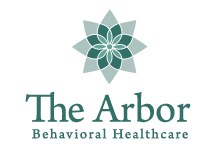People have used heroin for centuries for medicinal use to treat pain and recreationally to get high. Heroin first became popular in the U.S. in the early 1900s. In the 1950s and 1960s, heroin use began to increase. As soldiers returned from Vietnam, they began to turn to heroin to replace the morphine they had been given while at war. In the 1970s, heroin use continued to increase. Popular culture, such as movies and music, began to glamorize heroin use. This uptick led to more people using heroin recreationally.
John Lennon was one of the most famous musicians of his time. He was a member of the Beatles, one of the most successful bands in history. In the late 1960s, John Lennon began using heroin recreationally. Many people like Lennon began using the drug and ended up hooked on it. If you or a loved one could benefit from a heroin addiction treatment program, call the team at The Arbor at 844.413.2690 today to get help.
What Is Heroin?
Heroin is a highly addictive illegal drug that people extract from the opium poppy plant. It is a schedule I drug, which means that it has a high potential for abuse and no accepted medical use in treatment in the United States. When people use heroin, they may experience a rush of pleasure followed by a feeling of relaxation.
People usually use heroin by injecting it, snorting it, or smoking it. Injecting is the most efficient way to feel the drug’s effects because it goes directly into the bloodstream. Snorting or smoking heroin takes longer to feel the effects but is still very addictive.
John Lennon’s Heroin Use
As mentioned, John Lennon was a world-famous musician and member of the Beatles. He was also a heroin addict. In the late 1960s, when heroin use began to increase in popularity, Lennon started using the drug recreationally.
Lennon’s heroin use led to him becoming addicted to the drug. He struggled with his addiction for years. In 1971, he checked himself into a hospital to detox from heroin. He eventually kicked his addiction but relapsed in 1974. He then went through detox again and was able to stay clean until he died in 1980.
Risks of Heroin Use
There are many risks associated with heroin use. Since heroin is popularly injected, these risks include side effects of the drug and needle use. Some of the most common risks of heroin use include:
- Overdose
- Infectious diseases
- Collapsed veins
- Liver disease
- Kidney disease
Since the risks of heroin use are so high, it is critical to recognize the signs of addiction early so a recovery professional can help break the cycle.
Recognizing the Signs of Heroin Addiction
If you think someone you know is struggling with heroin addiction, look for these signs:
- Sudden weight loss
- Sleeping more or less than usual
- Wearing long-sleeved shirts in hot weather to hide needle marks
- Disappearing for long periods
- Lying or being secretive
- Stealing money or valuables
If you or someone you know is displaying these signs, find a professional to help begin the road to recovery.
How The Arbor Can Help with Heroin Addiction
Throughout modern history, heroin has held people in the grips of addiction. Trying to break free can be challenging, isolating, and even dangerous. When you are ready to regain independence from heroin, our team can help. The Arbor offers a variety of programs and therapies to help break the cycle of heroin addiction, including:
- Inpatient rehabilitation
- Outpatient treatment
- Aftercare
- Cognitive-behavioral therapy
- Art therapy
- Equine therapy
Our comforting, judgment-free environment in Austin, TX provides a safe haven for you to focus on your recovery. If you are struggling with heroin addiction, don’t wait to take the first steps to sobriety.

